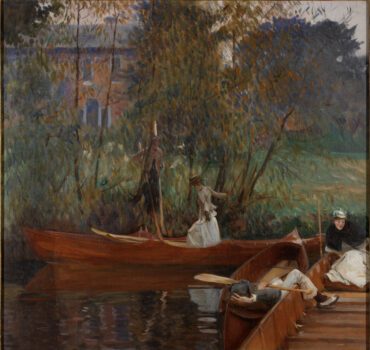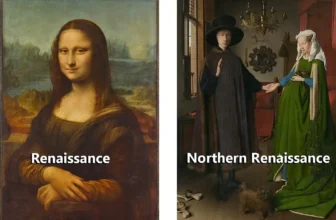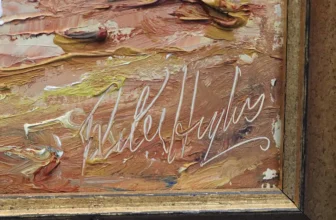A Boating Party Painting Beside the River
John Singer Sargent, widely regarded as one of the most technically gifted painters of the late 19th and early 20th centuries, produced a wide array of masterpieces in portraiture, landscape, and genre painting. While Sargent is perhaps best known for his formal portraits of high society figures, he also explored looser, more experimental compositions that showcased his impressionistic leanings and affinity for natural light. One such painting, A Boating Party, offers a compelling glimpse into a tranquil, intimate moment shared among friends on the water.
While not as universally known as some of his other works such as Portrait of Madame X or Carnation, Lily, Lily, Rose, A Boating Party stands out for its composition, atmosphere, and suggestion of narrative. This painting is more than a visual record of leisure; it is a window into the shifting sensibilities of the time, reflecting changes in social dynamics, artistic style, and Sargent’s own evolving creative direction.
This article delves deep into the meaning and symbolism of A Boating Party, analyzing its composition, context, and legacy in the broader framework of art history and Sargent’s oeuvre.
What Is A Boating Party All About?
At first glance, A Boating Party seems to depict a simple, sun-drenched scene: a group of individuals relaxing in a small boat, surrounded by the gentle ripples of water. However, like many of Sargent’s works, beneath this apparent simplicity lies a subtle richness of meaning and a masterful use of technique.
The painting captures a leisurely moment during what appears to be a late summer or early autumn day. The figures, elegantly dressed yet relaxed in posture, embody the Edwardian ideal of refined leisure. There’s no overt drama or action; the moment is frozen in time, quiet and meditative. The languid atmosphere suggests a respite from urban life, a celebration of nature and companionship.
While not much overt narrative is provided by the image alone, the scene hints at themes of escape, connection, and fleeting beauty. It evokes a sensation of stillness and harmony, situating the viewer as a silent observer of an idyllic moment that exists just on the edge of memory or dream.
Symbolism and Interpretation
1. The Boat as a Liminal Space
In many artistic traditions, the boat is a powerful symbol. It represents a transition between two realms, land and water, life and death, activity and rest. In A Boating Party, the boat functions as a metaphorical threshold, a space suspended between the solid world and the fluidity of water. It becomes a sanctuary of sorts, a place where societal norms can soften and individuals can momentarily step outside their roles.
The figures appear comfortable, even intimate with one another. They are enclosed in the safe embrace of the boat, shielded from the demands of the world. The water reflects the sky, blurring the line between the real and the ephemeral. In this reading, Sargent’s painting could be interpreted as an ode to ephemeral pleasures and the moments in life that seem to float, untethered, in time.
2. Light and Reflection
Sargent was famously fascinated with the effects of light, and A Boating Party offers a masterclass in the manipulation of natural illumination. The interplay of sunlight and shadow on the boat, the figures, and the water’s surface creates a luminous, almost dreamlike quality.
The light, perhaps more than any single figure or object, is the true subject of the painting. It plays across the clothing and faces of the passengers, catching in their hair and dancing on the water’s surface. This attention to light connects Sargent to the Impressionists, particularly Claude Monet, with whom he had both personal and artistic connections.
Symbolically, light can represent clarity, revelation, or transience. The way Sargent uses light in A Boating Party can be interpreted as a commentary on the fleeting nature of happiness and beauty, moments that are bright and brilliant, but destined to fade.
3. Social Commentary
While subtle, the painting may also contain reflections on the changing nature of society during the late 19th century. The Industrial Revolution had radically altered the fabric of Western life, and a growing upper-middle class began to emerge with both the means and leisure to enjoy excursions like boating.
Sargent, though American by birth, was deeply immersed in European society. His work often depicts the leisure class, not with judgment, but with a gentle, observant eye. In A Boating Party, the figures are neither idealized nor caricatured. They are real people, captured in an honest and fleeting moment of rest.
There’s an underlying commentary here: the world is changing. The modern age, with its conveniences and technologies, has brought new freedoms but also new anxieties. Boating becomes a way of escaping these complexities, drifting, quite literally, away from the pressures of modern life.
4. Color and Emotion
The palette of A Boating Party is subdued and harmonious, dominated by soft blues, whites, and muted earth tones. These colors contribute to the painting’s tranquil, introspective mood. Sargent uses color not only to convey light but to establish emotional resonance.
The cool tones of the water contrast gently with the warm skin tones of the figures, creating visual balance and psychological depth. The overall effect is one of calm and gentle introspection, a mood that encourages the viewer to slow down and contemplate the scene.
What Type of Art is A Boating Party?
A Boating Party is best understood as a synthesis of Impressionism, Realism, and Genre Painting, all channeled through Sargent’s distinctive lens. Although Sargent never fully aligned himself with the Impressionist movement, his approach to light and brushwork shares much with their aesthetic.
1. Impressionist Influences
The treatment of natural light.
The emphasis on leisure and modern life.
Loose, expressive brushwork that captures movement and mood rather than photographic detail.
Sargent spent time in France during the height of Impressionism and had direct relationships with artists like Monet, whose influence is evident in Sargent’s outdoor scenes and garden compositions.
2. Realism and Academic Technique
Despite his Impressionist leanings, Sargent was academically trained and maintained a high degree of technical precision. His ability to render fabric, skin, and facial expressions with a few brushstrokes reflects both his formal education and his mastery of the medium.
3. Genre Painting
A Boating Party also fits within the tradition of genre painting, which depicts scenes of everyday life. Unlike grand historical or mythological paintings, genre works focus on the personal and the immediate. Sargent’s interest in the seemingly mundane moments of life aligns him with this tradition, albeit with a modern twist.
What Is Happening in A Boating Party Painting?
The painting captures a quiet, almost cinematic moment in the midst of a boating excursion. The figures are relaxed, engaged in idle conversation or silent reflection. One might be reclining, another leaning over the edge of the boat, peering into the water. The boat appears stable but light enough to be affected by the gentle movements of the lake or river.
There is no central drama, no climactic action. This is a painting about stillness, about presence. What’s “happening” is less about events and more about mood, the serenity of water, the companionship of close friends, the sun warming the skin.
Sargent invites us into a space where time slows down. The figures are physically close, but emotionally self-contained, each lost in their own thoughts. It’s a moment of interiority made visible, a tableau of human presence without performance.
Where is The A Boating Party Painting’s Current Location
As of today, A Boating Party by John Singer Sargent is part of the collection at the Museum of Fine Arts, Boston. The MFA has one of the most extensive collections of Sargent’s work, due in part to the artist’s American roots and longstanding ties to the institution.
The painting is displayed among other works that explore light, leisure, and the turn-of-the-century shift in artistic focus. Seeing it in person reveals nuances that reproductions often miss, the vibrancy of the colors, the subtle texture of the brushwork, and the way the composition leads the eye across the canvas.
A Boating Party is a deceptively simple painting that encapsulates many of the themes and techniques that defined John Singer Sargent’s artistic legacy. It bridges the gap between academic realism and impressionistic spontaneity, capturing a fleeting moment with sensitivity, elegance, and technical mastery.
Through light, color, and composition, Sargent turns an ordinary outing into a contemplative, almost poetic reflection on time, friendship, and the transience of life. The painting invites us to pause, to immerse ourselves in the gentle rhythm of the water, the warmth of the sun, and the unspoken connections between people.
More than just a portrait of a boating excursion, it is a meditation on presence and peace. In our fast-paced, image-saturated world, A Boating Party reminds us of the beauty that can be found in stillness, and the stories that unfold when we simply allow ourselves to float.




